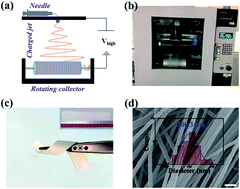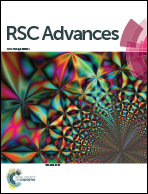Piezoelectric polymer nanofibers for pressure sensors and their applications in human activity monitoring†
Abstract
Miniaturized, wearable and self-powered sensors are crucial for applications in artificial intelligence, robotics, healthcare, and communication devices. In particular, piezoelectric polymer-based sensing systems have the advantages of light weight, large piezoelectricity and mechanical flexibility, offering great opportunities in flexible and stretchable electronic devices. Herein, free-standing large-size nanofiber (NF) membranes have been fabricated by an electrospinning technique. Our results show that the as-synthesized P(VDF–TrFE) NFs are pure β-phase and exhibit excellent mechanical and thermal properties. Besides having high sensitivity and operational stability, the fibrous sensor can generate remarkable electrical signals from applied pressure, with an output voltage of 18.1 V, output current of 0.177 μA, and power density of 22.9 μW cm−2. Moreover, such sensors also produce significant electrical performance of up to a few volts under human mechanical stress, thereby allowing for the monitoring of biomechanical movement of the human foot, elbow, and finger. Our study sheds light onto the use of piezoelectric polymers for flexible self-powered sensing electronics and wearable devices.



 Please wait while we load your content...
Please wait while we load your content...